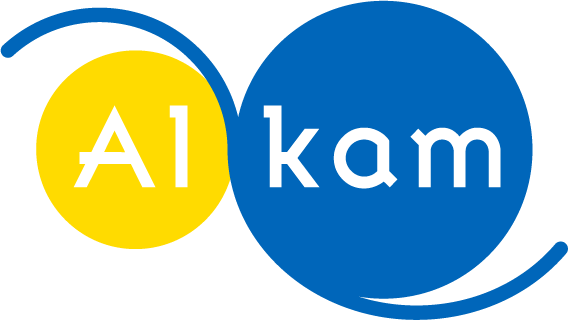MOCA labelling: how we ensure the food safety of labels
- Alkam
- 3 days ago
- 4 min read

Table of Contents
Introduction
What are MOCAs?
When can a label pose a risk?
How do we ensure MOCA compliance?
What are the MOCA regulations that need to be met?
The benefits for food companies
Conclusions
1. Introduction
In the food industry, the safety of materials that come into contact with food is an absolute priority. In addition to packaging and containers, labels can also be involved in the process and, in some cases, come into direct or indirect contact with the food product. This is where MOCA regulations that govern requirements for food contact materials and objects come into play.
For years, we have been working to ensure that our labels are made according to current Italian and European MOCA (Materials and Objects in Contact with Food) regulations. Therefore, we can clearly state that our materials, processes and controls are fully compliant with current regulations, which qualifies us for MOCA labeling. Of course, MOCAs affect all companies in the food world, therefore, both food manufacturers but also those who make packaging for food use.
2. What are MOCAs?
The acronym MOCA stands for Materials and Objects in Contact with Food. European and Italian regulations require that any material intended for contact with food must not:
Release substances harmful to human health.
Alter the composition, taste or appearance of food.
Compromise the safety of the product.
Included in MOCA are containers, packaging, utensils, but also labels when there is a possibility that they will come into direct contact with the food or there is a risk of migration of substances, for example if there is no functional barrier.
3. When can a label pose a risk?
Not all food labels require the same level of attention.
Here are some practical cases where it is important to comply with MOCA requirements:
Direct food contact: labels applied directly to fruits, meats, cheeses or bulk products.
Indirect contact during filling: for example, labeled trays that are stacked and then filled. In this case, the label may come into contact with the product contained in the tray below.
Lack of functional barrier: in the absence of a material, such as glass, that acts as a barrier between label and product, it is essential to use suitable materials with a low risk of migration.
Conversely, in the case of glass bottles, such as wine or beer bottles, the presence of glass provides a sufficient functional barrier to prevent any contamination.
4. How we ensure MOCA compliance of our labels
As a label manufacturer with many years of experience, we strictly follow both Italian and European regulations. We do this with care and precision through the following steps:
Registration with the Health Authority (ATS)We are registered with the local health authority (ATS), as required by law.
Selection of compliant materialsAll materials used in our food-contact labels are selected for MOCA compliance, with specific attention to low migration. We carefully research the best materials suited to the customer’s product and use case.
Good Manufacturing Practices (GMP)We follow GMP by tracking every material, ink and varnish used. Each batch is recorded and traceable for inspection by ATS, clients or partners.
Migration testing and analysisWhen necessary, we carry out in-depth laboratory testing through certified facilities that:
Analyse hundreds of parameters,
Provide detailed reports,
Assess the compliance of material and food combinations.Production only begins after a positive test result.
Technical support and consultationFrom the very first contact, our sales team works with the client to understand the end use: whether there will be direct contact, whether a functional barrier is present, usage conditions, and food type. If products like fruit are involved, we also assess whether the skin is edible, to further ensure food safety.
We also held a webinar on MOCA and food labels: [click here to watch the full recording].
5. What MOCA regulations must be followed?
European RegulationsMOCA compliance is based on a set of complex European and national laws. Key references include:
Regulation (EC) 1935/2004: General safety requirements for all MOCA materials.
Regulation (EC) 2023/2006: Requires manufacturers to apply Good Manufacturing Practices.
Specific materials have additional rules, such as:
Regulation (EU) 10/2011 for plastics.
Regulation (EU) 2022/1616 for recycled plastics.
National regulations (Italy)The Italian framework includes:
Ministerial Decree of 21 March 1973: Regulates materials not harmonized at EU level (e.g., paper, cardboard, aluminium, inks).
Legislative Decree 29/2017: Requires MOCA producers and distributors (including label makers) to register with the local health authority (ATS/ASL).Companies must also produce and maintain a Declaration of Conformity for each MOCA material, supported by migration tests and up-to-date technical documentation.
6. Benefits for food companies
Working with a MOCA-compliant label manufacturer brings many advantages:
Benefit | Description |
Food safety | Reduces risk of contamination from label materials or inks. |
Regulatory compliance | Peace of mind during audits and inspections. |
Brand protection | Avoids serious issues such as product recalls or customer complaints due to contamination. |
Technical support | Guidance and analysis on materials, usage, and storage conditions. |
Traceable documentation | Easy access to MOCA Declarations of Conformity when needed. |
7. Conclusion
Food companies are responsible for ensuring product safety throughout the supply chain. Labels, often overlooked, can be a critical point if not manufactured using MOCA-compliant materials and processes. The consequences of non-compliance – including product recalls and reputational damage – can be serious.
As a professional label manufacturer, we are committed to providing food-safe, fully documented, and compliant labels in accordance with the latest legislation.
Need food-safe labels?We offer a free initial consultation: click here and fill out the form to request it.

Комментарии